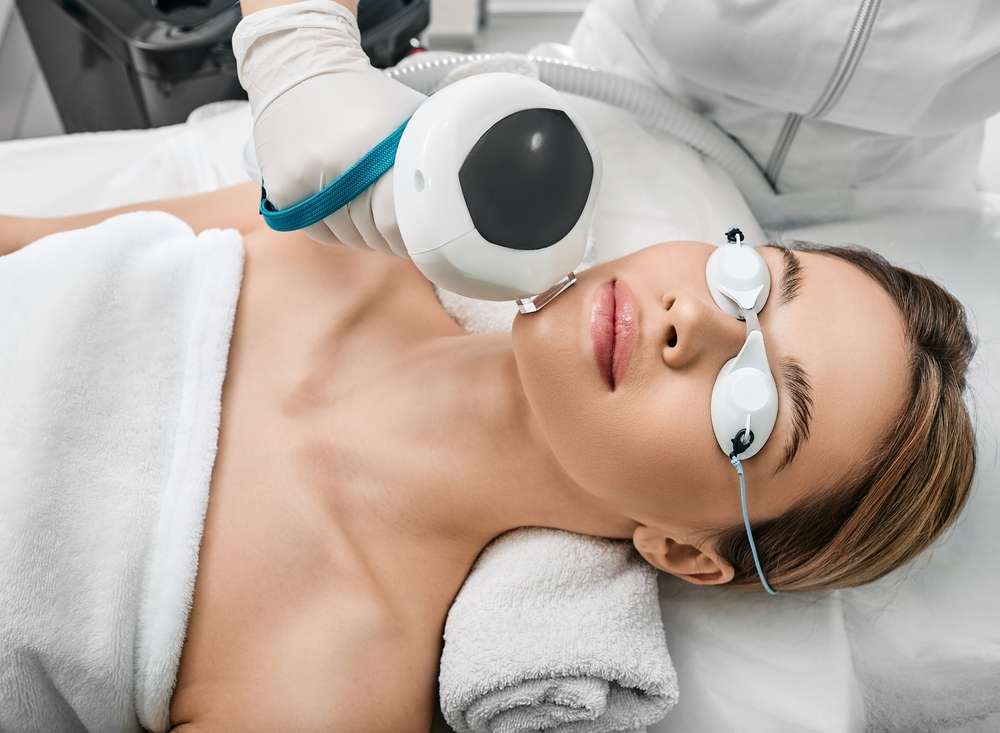Understanding Laser Skin Tightening: A Comprehensive Guide
Laser skin tightening has become an increasingly popular non-invasive cosmetic procedure for those seeking to reduce signs of aging and improve skin texture. This treatment uses focused light energy to stimulate collagen production beneath the skin's surface, helping to firm and rejuvenate areas that have lost elasticity over time. Whether you're considering this procedure for facial rejuvenation or body contouring, understanding the technology, benefits, costs, and available options can help you make an informed decision about whether laser skin tightening is right for your skincare goals.

Laser skin tightening represents a significant advancement in aesthetic medicine, offering individuals a way to address loose or sagging skin without undergoing surgery. As we age, our skin naturally loses collagen and elastin, the proteins responsible for maintaining firmness and elasticity. Environmental factors, sun exposure, and lifestyle choices can accelerate this process, leading many to seek solutions that restore a more youthful appearance. This procedure has gained traction among those who want visible results with minimal downtime and reduced risk compared to traditional surgical options.
How Does Laser Skin Tightening Work?
Laser skin tightening operates on the principle of controlled thermal energy delivery to the deeper layers of the skin. During treatment, a specialized laser device emits concentrated light energy that penetrates beneath the skin’s surface without damaging the outer layer. This energy heats the collagen fibers in the dermis, causing them to contract immediately and stimulating the body’s natural healing response. Over the following weeks and months, the treated area produces new collagen, which gradually tightens and firms the skin. Different wavelengths and laser technologies target specific depths and skin concerns, allowing practitioners to customize treatments based on individual needs. The procedure typically requires no anesthesia beyond topical numbing cream, and most sessions last between 30 minutes to an hour depending on the treatment area. Results develop progressively, with optimal outcomes usually visible three to six months after the final session.
Benefits of Laser Skin Tightening
The advantages of laser skin tightening extend beyond simple aesthetic improvement. One primary benefit is the non-invasive nature of the procedure, which eliminates the risks associated with surgery such as scarring, infection, and lengthy recovery periods. Most individuals return to normal activities immediately or within a day or two, experiencing only mild redness or swelling. The treatment effectively addresses multiple concerns including sagging jowls, loose neck skin, fine lines, and mild to moderate skin laxity on the abdomen, arms, and thighs. Unlike some cosmetic procedures that produce immediate but temporary results, laser skin tightening stimulates natural biological processes that continue improving skin quality over time. The gradual nature of results also means changes appear natural rather than sudden or dramatic. Additionally, the procedure can be performed on various skin types and tones, though consultation with a qualified practitioner is essential to determine suitability and expected outcomes.
Types of Laser Skin Tightening
Several laser technologies are available for skin tightening, each with distinct characteristics and applications. Ablative lasers, such as CO2 and Erbium lasers, remove the outer layer of skin while heating the underlying tissue, promoting significant collagen remodeling. These typically require more downtime but can produce dramatic results for severe skin laxity. Non-ablative lasers, including Nd:YAG and infrared lasers, work beneath the skin surface without removing tissue, making them gentler with minimal recovery time. Fractional lasers create microscopic treatment zones, leaving surrounding tissue intact to speed healing while still stimulating collagen production. Radiofrequency-assisted laser treatments combine laser energy with radiofrequency waves to enhance skin tightening effects. Some advanced systems like Thermage and Ultherapy use ultrasound or radiofrequency rather than traditional laser light, though they achieve similar collagen-stimulating results. The choice of technology depends on factors including skin condition, treatment area, desired results, skin type, and tolerance for downtime.
Costs of Laser Skin Tightening
The financial investment for laser skin tightening varies considerably based on multiple factors including geographic location, provider expertise, treatment area size, technology used, and the number of sessions required. Understanding typical pricing structures can help individuals budget appropriately for this cosmetic enhancement. Most practitioners recommend a series of treatments for optimal results, which affects overall cost.
| Treatment Area | Typical Cost Per Session | Number of Sessions Needed | Technology Type |
|---|---|---|---|
| Face (full) | $1,000 - $3,500 | 3-6 sessions | Non-ablative/Fractional |
| Neck and Jawline | $800 - $2,500 | 3-5 sessions | Non-ablative |
| Abdomen | $1,500 - $4,000 | 4-6 sessions | Radiofrequency/Laser |
| Arms or Thighs | $1,200 - $3,000 | 4-5 sessions | Non-ablative |
| Small Areas (eyes, mouth) | $500 - $1,500 | 2-4 sessions | Fractional |
Prices, rates, or cost estimates mentioned in this article are based on the latest available information but may change over time. Independent research is advised before making financial decisions.
Many factors influence the final price, including whether the provider is a dermatologist, plastic surgeon, or medical spa, as well as the specific laser system being used. Premium technologies with proven track records may command higher fees but often deliver superior results with fewer treatments. Some practices offer package pricing for multiple sessions, which can reduce per-treatment costs. Insurance typically does not cover laser skin tightening as it is considered an elective cosmetic procedure, so patients should plan to pay out of pocket.
Preparing for and What to Expect
Proper preparation enhances treatment outcomes and minimizes potential complications. Most practitioners recommend avoiding sun exposure for several weeks before treatment and discontinuing certain medications or supplements that increase bleeding risk. During the consultation, a qualified provider assesses skin condition, discusses realistic expectations, and develops a customized treatment plan. The procedure itself involves cleansing the treatment area, applying topical anesthetic if needed, and systematically treating the skin with the laser device. Patients often describe the sensation as warm or tingling, generally well-tolerated. Post-treatment care typically includes gentle cleansing, moisturizing, sun protection, and avoiding harsh skincare products for several days. Mild side effects such as redness, swelling, or temporary skin sensitivity are normal and usually resolve within a few days.
Conclusion
Laser skin tightening offers a viable option for individuals seeking to improve skin firmness and reduce signs of aging without surgical intervention. Understanding how the technology works, the various types available, potential benefits, and associated costs enables informed decision-making. While results vary based on individual factors such as age, skin condition, and lifestyle, many people achieve noticeable improvements in skin texture and tightness. Consulting with a qualified, experienced practitioner is essential to determine the most appropriate treatment approach and establish realistic expectations for outcomes.
This article is for informational purposes only and should not be considered medical advice. Please consult a qualified healthcare professional for personalized guidance and treatment.




